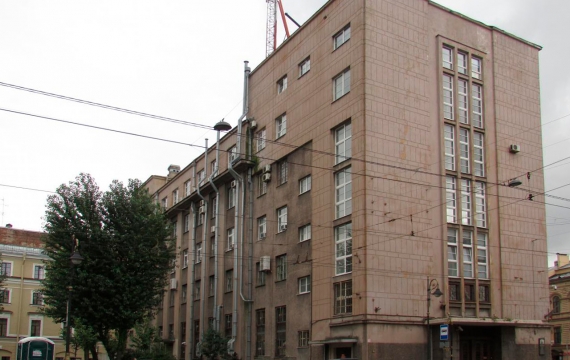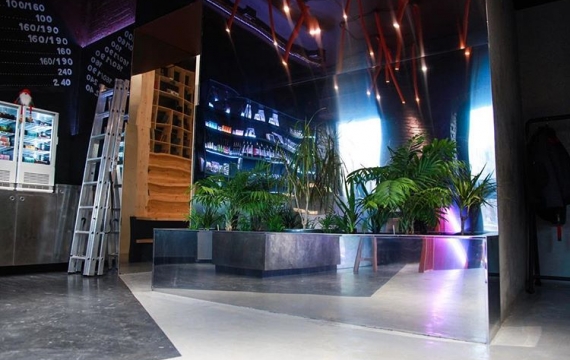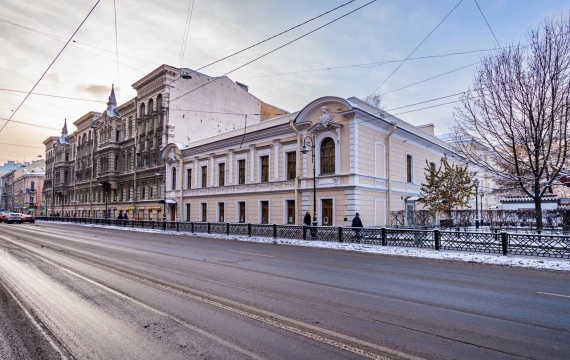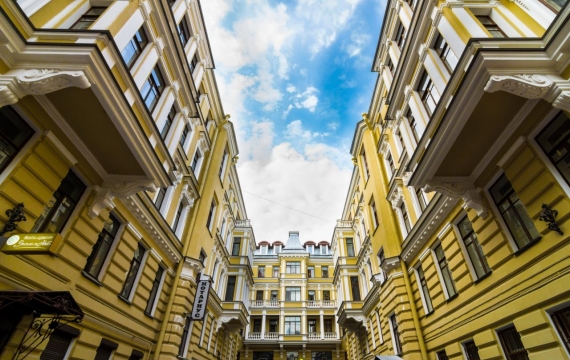Sergievskaya, Kirochnaya, Panteleimonovskaya

Start
Prachechny bridge
Travel time
45 minutes (at a calm pace, excluding time spent in coffee houses)
Length
3,3 km
Finish
Panteleimonovsky bridge
sightseeing routes
What is this route?
The route passes through the streets of Tchaikovsky (formerly Sergievskaya), Kirochnaya and Pestel (formerly Panteleimonovskaya). All three streets received their historical names from the cathedrals located here, one of which was irretrievably lost.
But did you know that Sergievskaya Street initially did not reach Fontanka? She rested on the Diagonal Canal, which took place on the site of the current street Gunsmith Fedorov. Then began the ponds for breeding fish to the royal table. By 1770, ponds and a canal were filled up, the street was extended to Fontanka and a palace laundry building was built on the corner, which was called the bridge over Fontanka.
Walking along the route, you will learn a lot of interesting things about the ancient buildings located here, aristocratic mansions, tenement houses and bridges, with coffee breaks.
What can you expect?
The route begins on the Laundry Bridge over the Fontanka. This is one of the first St. Petersburg stone bridges. It owes its name to the palace laundry, located on the corner of the Fontanka and the current Tchaikovsky Street (formerly Sergievskaya).
You can try to straighten the path through the entrance courtyards, at the same time admiring the local attraction - the Mosaic courtyard of the Small Academy of Arts. But the entrance from Fontanka Embankment, 2, is often closed, and if you are curious, then go into this courtyard from Tchaikovsky Street, 2.
Further on your way, there are two interesting mansions: state ladies Elizabeth Buturlina (Mokhovaya Street rests on it) and diplomat Mikhail Ustinov (at the beginning of the same Mokhovaya Street) - this house is also famous for the fact that the writer Ivan Goncharov lived in it.
At the intersection with Liteiny Prospect, there are two more famous buildings: the New Arsenal - the former arms factory - on the odd side of Liteiny and the building of the Ministry of Internal Affairs on the even. This constructivist building was erected in the 1930s for the infamous Stalin NKVD, and before that there was the cathedral of St. Sergius of Radonezh, built in the 18th century and giving the name of Sergievskaya Street.
A memorial plaque on the facade of the house resembles a cathedral. It is also interesting that both buildings - the New Arsenal and St. Sergius Cathedral - were designed by the same architect Fedor Demertsov.
We continue our journey along Tchaikovsky Street, and again we see two old mansions in front of us. On the left is Kelch's mansion, combining Gothic, Baroque, Rococo, modern and neo-Renaissance. And on the right is the Trubetskoy-Naryshkin mansion, interesting is that in the XVIII century the site belonged to Abram Hannibal, "the arap of Peter the Great." This house has a nice Armenian coffee house where you can have a halt.
Through Druskeniksky Lane we will go out to Furshtatskaya Street, and from there - to Annenkirche, the existing Lutheran church (kirche), through which Kirochnaya Street got its name. In addition to worship, there are concerts, lectures and film screenings. Opposite the church is another pretty coffee house called Front.
Behind the houses you can see the domes of the Transfiguration Cathedral - this outstanding monument of classicism was erected by the architect V.P. Stasova. To see the cathedral close by, you can make a small detour through Radishchev Lane.
At the corner of Kirochnaya and Liteiny - the building of the former Officers' Assembly, now the House of Officers, mentioned in one of Joseph Brodsky's poems (who lived nearby, in the house of Muruzi):
“In the distance is the House of Officers. Officers
Like birds, with lots of buttons around. ”
On the opposite side of the Foundry is a very interesting institution, “Warehouse 17”, which combined a coffee shop with a lecture hall and a gallery of modern art. And nearby, in the old mansion of Counts Musinykh-Pushkins, there is a library named after Lermontov, a famous St. Petersburg cultural center.
Your further path lies along Pestel Street (former Panteleimonovskaya), where you will definitely pay attention to the Ratkov-Rozhnov apartment house with a high arch and a magnificent courtyard-courdoner. On the other side - Panteleimonovskaya (Panteleimonovskaya) church, one of the oldest St. Petersburg Orthodox churches, which gave its name to the street and the bridge over the Fontanka.
Panteleimonovsky bridge is the final point of your route. Its history is extremely interesting - suffice to say that in the XVIII century there was an aqueduct in its place, through which water flowed to the fountains of the Summer Garden. You can learn more from the article about this bridge in our mobile guide.


















